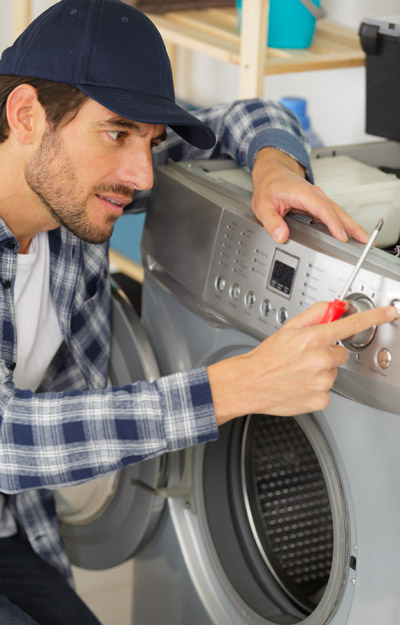Make sure you haven't got the discount earlier.
Appliance Parts
- Accessories
- Dishwasher
- Dryer
- Stove / Oven
- Microwave
- Refrigerator
- Washer
- See more... See less...
Lawn Equipment Parts
- Lawn Mower
- Chainsaw
- Blower
- Generator
- Air Compressor
- Lawn Tractor
- Pressure Washer
- See more... See less...
Top Appliance Safety Hazards
By Steve Ash
Living in the 21st century definitely has its perks ' gone are the days of hand washed laundry, in-ground coolers and fire cooked meals. Thanks to the miracles of technology, we're finishing tasks in minutes that used to take hours. Who said life wasn't easy?
As simple and efficient as these modern conveniences might make our lives, at no point should we ever forget that they too have the potential to fail. If you think about just how many mechanisms must interact at exactly the right time to complete a load of laundry, you can appreciate why at some point something might go wrong. When it comes to your appliances, it's important to take into consideration that just because something is new it doesn't mean that it is invincible. Just last week Bosch issued a major recall of certain models of their dishwasher's due to a fire risk, following in the footsteps of UK brand Beko who announced a fridge and freezer recall the week before. In both situations, the models were no more than 10 years old and appeared to be working fine.
Although recalls may be unavoidable, there are definitely a few things you can do around the home to help ensure you're living in a safe and worry-free environment. Here is our list of the top 3 most common appliance safety hazards and what you can do to prevent them.
- Whether you're an active cooker or a casual one, grease and fat are bound to build-up in and around your stove. Although most of us make a point of wiping down the exterior, we often forget about the hidden areas, like below your elements and up in your vent hood, where dirt and grime actually gather the most. Ignoring these spaces is a big no-no and can be a huge fire hazard. We recommend a solid cleaning once every six months to keep your stove and vent hood hazard-free.
- Dryer vents are another often forgotten area that pose a big fire hazard. It's important to clean your lint filter every time you use your dryer but that isn't the only thing you need to be doing to keep your home safe. Excess lint often bypasses the lint screen and quickly builds up in your dryer vent and throughout your duct work. Regular maintenance as well as a thorough cleaning at least twice a year can play a big role in helping to decrease the risk of fire.
-
Here are a few tips on cleaning dryer vent from our repairman Steve:

- Judging by the amount of dirt and dust that can be found behind refrigerators, it's safe to say that most of us aren't pulling out our fridge often enough to see what's going on back there. There are a few big things to keep in mind when it comes to keeping your fridge safe; first of all, if you are feeling ambitious and do decide to clean behind you fridge, be very gentle when pulling it out from the wall ' accidentally rolling over its cord could expose dangerous wires to the elements. Another thing to watch for around your fridge is water, which has the potential to seep into electrical components, increasing the risk of fire or other electrical damage. Last but not least, keeping your fridge coils clean will make a big difference when it comes to avoiding compressor failure.
These are only a few examples of potential safety hazards that can be found around the home. A few other easy things you can do to prevent the risk of fire or injury include:
- unplugging unused appliances
- using the dryer, dishwasher or washing machine while away from the house
- frequently checking hoses to ensure they're properly attached and
- keeping an eye out for exposed wires, broken receptacles or missing parts
Product recalls are an all too common reality these days, and paying attention to your appliances can mean the difference between a replacement machine and a kitchen fire. Sparks, smoke, buzzing or strange smells can all be cause for concern and should never be ignored. If you're uncertain about something, contact the manufacturer to confirm that the behavior is normal.
Be careful and stay safe!
- Search your model number to find:
- Genuine OEM parts guaranteed to fit
- Free manuals and guides
- Repair instructions and videos



































